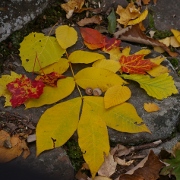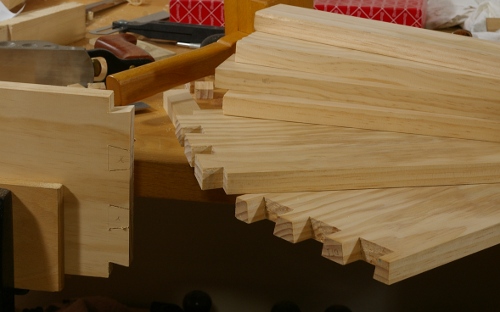The saw till is coming along now. I finished the dovetails before I left for my trip, but didn’t have a chance to work on anything else until I got back and started to get over the stupid cold I managed to get while I was in PA.
Yesterday, I had some extra time, so first, I reworked the shape on my mortise chisel because it was a little skew. Being laminated, it is easy to shape despite its huge size. Then I got down to business, making the first through mortise ever with that chisel:

Hey, that didn’t turn out so bad at all. Admittedly, I was a little more careful in setting up the mortise marking gauge this time. A little more care is in order for this wood, because it’s so soft that you can really dent it up if you’re not careful. Otherwise, you just do it the way everyone tells you to: Mark on both sides, chop halfway through, turn around, and chop the other half. And don’t chop the ends until you’re about finished.
With mortise angst out of the way, it was time to move on to tenon angst. The first one on a stretcher is easy. The second one is a little harder because you have to get the stretcher length just right. I marked the baseline from the dovetail pinboard (rather than measuring):
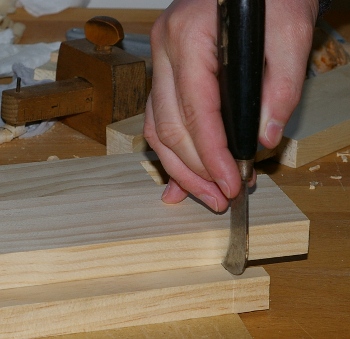
Yep, that’s the humiliating marking knife again. Not too optimal for this particular mark, but at least it worked.
(I also marked the mortise locations on the second board from the first, it seemed a lot more reliable than measuring.)
Then it’s off to the races with my new tenon saw:
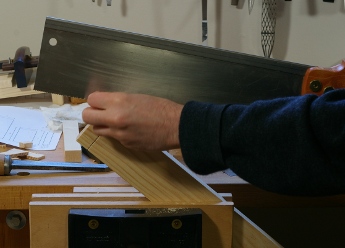
Holy cow, look at how much camera time my hands are getting in their debut photo shoot. Well, I always told myself that if all my usual career options were dead, I’d still have the hand model option to fall back on.
With one stretcher done, it was time to do a test fitting of the pieces completed so far to make sure that everything was square and decent-looking. Shockingly, it was.
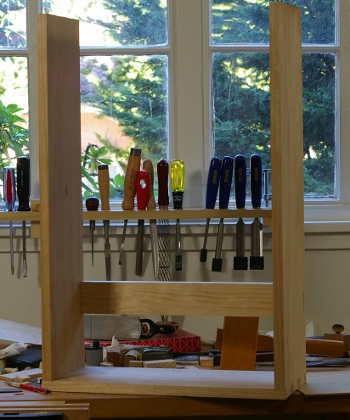
Woo, check out those stylin’ plastic-handled chisels. Well, I’m not sure how I feel about this. I know I need a few more chisels and I really like a lot of the old ones I’ve tried, but the ones I have work fine for now, especially the yellow Lee Valley ones. I even have a few old ones that I like, they just need handles and sharpening, but I’ve just been too lazy to get them in order.



